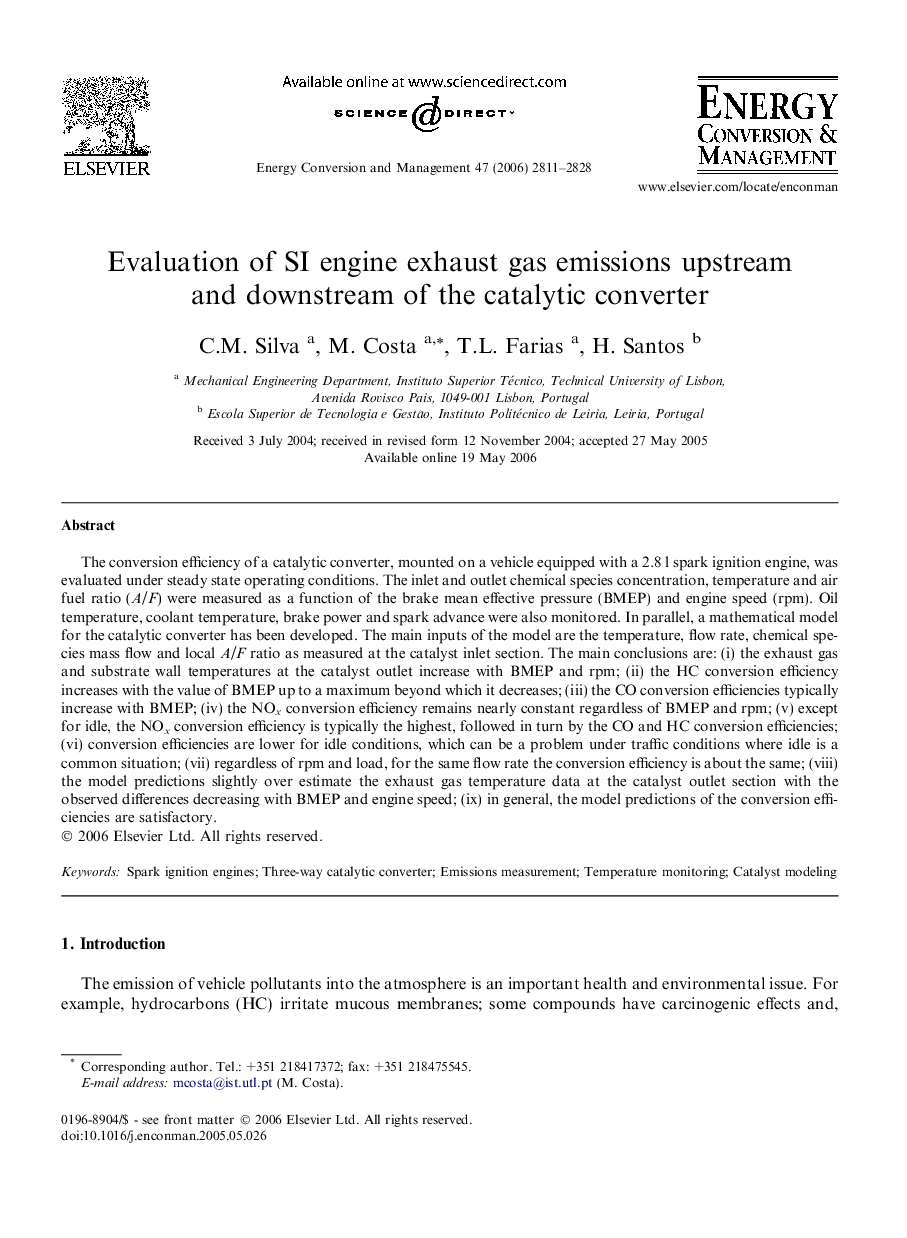| کد مقاله | کد نشریه | سال انتشار | مقاله انگلیسی | نسخه تمام متن |
|---|---|---|---|---|
| 762229 | 1462910 | 2006 | 18 صفحه PDF | دانلود رایگان |

The conversion efficiency of a catalytic converter, mounted on a vehicle equipped with a 2.8 l spark ignition engine, was evaluated under steady state operating conditions. The inlet and outlet chemical species concentration, temperature and air fuel ratio (A/F) were measured as a function of the brake mean effective pressure (BMEP) and engine speed (rpm). Oil temperature, coolant temperature, brake power and spark advance were also monitored. In parallel, a mathematical model for the catalytic converter has been developed. The main inputs of the model are the temperature, flow rate, chemical species mass flow and local A/F ratio as measured at the catalyst inlet section. The main conclusions are: (i) the exhaust gas and substrate wall temperatures at the catalyst outlet increase with BMEP and rpm; (ii) the HC conversion efficiency increases with the value of BMEP up to a maximum beyond which it decreases; (iii) the CO conversion efficiencies typically increase with BMEP; (iv) the NOx conversion efficiency remains nearly constant regardless of BMEP and rpm; (v) except for idle, the NOx conversion efficiency is typically the highest, followed in turn by the CO and HC conversion efficiencies; (vi) conversion efficiencies are lower for idle conditions, which can be a problem under traffic conditions where idle is a common situation; (vii) regardless of rpm and load, for the same flow rate the conversion efficiency is about the same; (viii) the model predictions slightly over estimate the exhaust gas temperature data at the catalyst outlet section with the observed differences decreasing with BMEP and engine speed; (ix) in general, the model predictions of the conversion efficiencies are satisfactory.
Journal: Energy Conversion and Management - Volume 47, Issues 18–19, November 2006, Pages 2811–2828